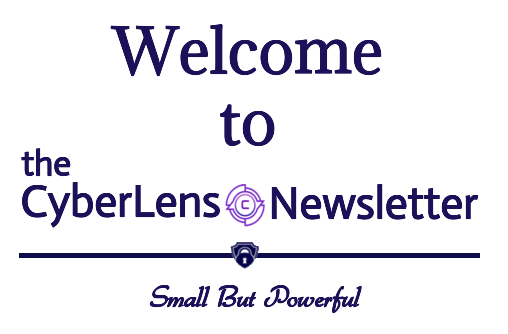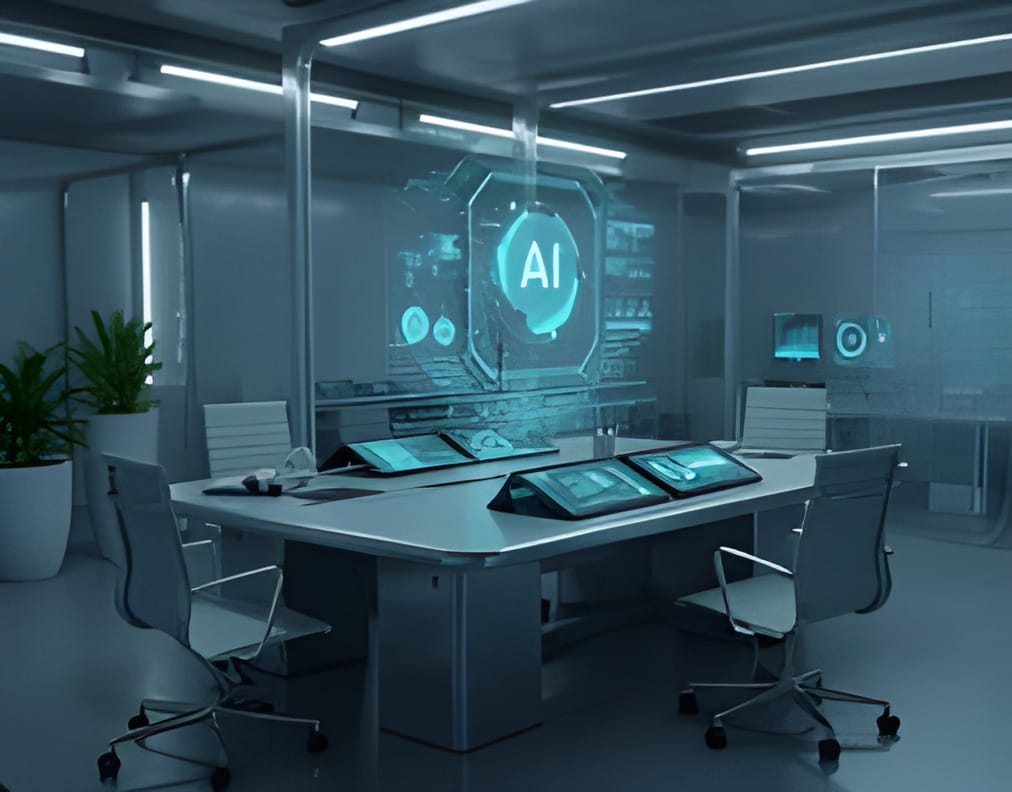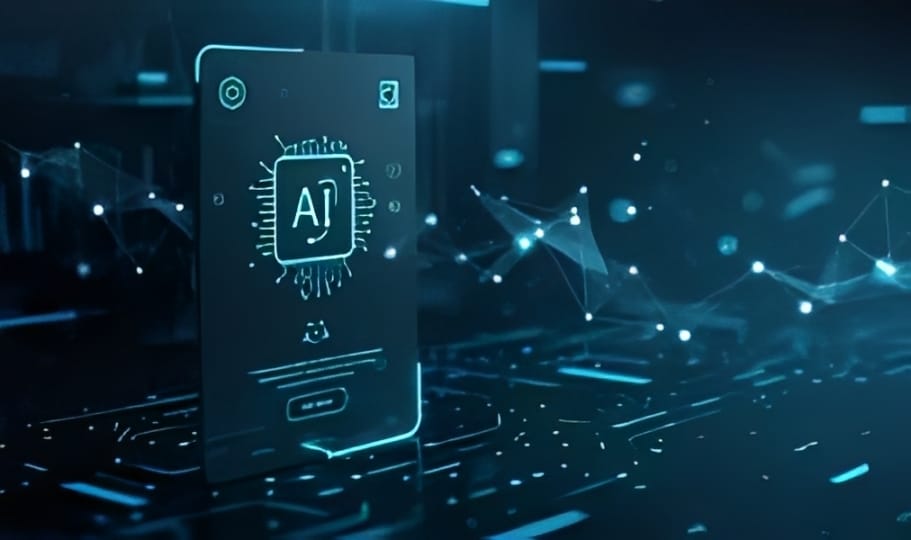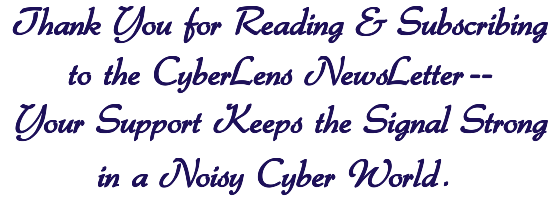- The CyberLens Newsletter
- Posts
- Keeping People Powerful in the Tech Driven Workplace
Keeping People Powerful in the Tech Driven Workplace
Navigating the Human-Machine Tightrope in the Age of Intelligence

Tech moves fast, but you're still playing catch-up?
That's exactly why 100K+ engineers working at Google, Meta, and Apple read The Code twice a week.
Here's what you get:
Curated tech news that shapes your career - Filtered from thousands of sources so you know what's coming 6 months early.
Practical resources you can use immediately - Real tutorials and tools that solve actual engineering problems.
Research papers and insights decoded - We break down complex tech so you understand what matters.
All delivered twice a week in just 2 short emails.

👨🌾🐎Interesting Tech Fact:
In the late 19th-century British agricultural revolution, the widespread adoption of horse-drawn reapers and threshing machines dramatically changed employment: with one combine harvester in the 1880s able to cut, rake and bind roughly 20 acres of wheat a day with just two men and two horses—work that previously would have required dozens of laborers. This mechanization freed thousands of farm workers to migrate into expanding manufacturing and service sectors, reshaping labor patterns and contributing to modern urban employment growth.
Introduction
The upheaval sweeping through workplaces driven by advanced systems is more than a technological story—it’s a human one. Around the globe, organizations are integrating intelligent tools to streamline operations, cut costs, and boost speed. The promise is seductive: faster decisions, fewer errors, leaner teams. But lying in the shadows of that promise is a far more sobering question: what happens to the humans in that machine-driven loop? The answer begins with acknowledging a simple truth: when machines claim tasks, people risk losing purpose, pay, and position.

The Changing Employment Landscape
We have entered a moment in which the pace of transformation is accelerating. According to one study, some 12.6 % of U.S. jobs face a “high or very high” risk of being displaced by automation →SHRM.org. At the same time, global expert commentary warns that up to 40 % of roles could be affected across industries →Economic Times. The framing of the phenomenon is shifting: it is no longer simply “automation” of routine tasks, but increasingly “intelligent substitution” of cognitive, low-barrier, or transitional roles.
Industry leaders and researchers are now asking what the impact will be—not just for individual workers, but for the structure of employment itself. As one analyst put it, > “It’s losing their job to somebody else who knows how to use AI. That is going to be a much greater displacement” →Weforum.org. That subtle shift—from machine replacing worker to worker replaced by someone who works with machine—is one of the most profound tensions of our time.
In practical terms, this means roles once considered safe are now under fire. Positions that rely on predictable processes, pattern recognition, document review, data entry, and first-level decision making are coming under the spotlight. A recent paper found that even workers with undergraduate degrees—even some professionals—are vulnerable, as the new generation of intelligent systems can replicate much of the task burden once reserved for humans →Iotforall.com.
Displacement in Real Jobs
Which job roles are under greatest threat? The evidence is growing clearer. Administrative and secretarial jobs, customer service and call-center roles, telemarketing, entry-level accounting and finance processing—these are among the first to feel the effects. The UK think-tank Tony Blair Institute noted that “administrative, secretarial, sales, and customer service jobs” will be most exposed, especially those performing routine cognitive tasks.
Professional roles are not immune. The new generation of large language models and multi-modal systems threatens paralegal tasks, draft document reviews, basic legal research, insurance underwriting, risk assessment in finance—not because humans were lazy, but because machines are increasingly competent. Research shows that skills considered “substitutable” by AI (such as customer service, text review) are declining in demand, while so-called “complementary” skills (digital literacy, teamwork, adaptability) are increasing→Arxiv.com.
The displacement is real. A blog tracking job cuts claims that in 2025 alone, nearly 78 000 roles have been wiped out in just the tech sector in the U.S., according to one tally →Finalroundai.com. These numbers are startling not because they surprise us—they surprise us because they are accelerating faster than expected.

Strategies to Prevent the Spiral of Displacement
If machines are claiming tasks, how do organizations and workers respond in ways that preserve employment rather than accelerate elimination? Here are five key actionable recommendations:
Reskilling & upskilling the workforce: Create continuous learning pathways that equip workers with skills not easily automated—critical thinking, empathy, oversight of AI systems, data interpretation, human-centered design. Research emphasizes demand for complementary skills is rising.
Redesigning job roles around human strengths: Rather than let machine take over entire job roles, businesses should reshape tasks so humans handle context, ethics, judgment, creativity while machines support throughput and repetition. This redesign prevents redundancy and preserves value.
Embedding humans in AI workflows (human-in-loop): When systems are designed so humans remain in supervisory, exception-handling, review, and escalation roles, the human dimension is preserved, and trust in the system grows.
Creating organizational cultures of adaptability: Firms must develop cultures where workers feel capable of adapting, where job definitions are flexible, and change is embraced rather than resisted. Leadership must value human-machine collaboration over pure automation.
Policy and corporate social responsibility frameworks: Governments and companies must collaborate on early-warning systems for jobs at risk, safety nets for displaced workers, equitable distribution of gains from increased productivity, and planning for transitions. As one academic work warns: unchecked machine capital could destabilize economies.
These strategies are not optional. The cost of inaction may not just be individual job loss, but broader erosion of workforce participation, worker morale, and social cohesion.
Global Economy and Human Replacement: The Real Impacts
The macro view reveals a more complex picture. On one hand, intelligent systems promise enormous productivity gains, faster innovation, and increased global competitiveness. But on the other hand, continual replacement of human labor raises deeper questions about demand, equity, and growth.
Work isn’t just about income—it’s about participation, identity, structure, and stability. Many economists warn that if human labor is continuously replaced without corresponding new roles or redistribution of gains, we risk creating a divergence: high output and economic growth on one side, shrinking employment and under-utilized human potential on the other. For example, a recent study points to the danger of a self-reinforcing cycle of recessionary pressures if capital displaces labor too quickly.
Moreover, from a global perspective, this shift could widen inequality between regions with deep technological infrastructure and skills, and those without. Countries that depend heavily on labor-intensive industries may find themselves squeezed as machines optimize tasks and reshape supply chains. The ripple effect can manifest in lower consumer demand, regional economic decline, the hollowing out of middle-sized firms, and weakened communities.
Another dimension: the displacement of humans from predictable tasks can reduce wage pressure for these jobs, forcing workers into gig or precarious work, increasing insecurity—thereby reducing consumption capacity. If large portions of the workforce feel insecure or unable to invest, the macro-economy can shift into low-growth or stagflation scenarios. In short: replacing people may increase production, but without humans to buy, the system may falter.

Finding the Balance and Charting Future Outcomes
So how do we avoid a world where humans become redundant cogs—or worse, bystanders in a machine-dominated economy? Balance is the operative word. Balance means designing systems where human judgement, empathy, ethical oversight, creative synthesis remain central, while machines handle heavy lifting. It means societies consciously valuing human-plus-machine ecosystems, not machine replacement ecosystems.
Experts emphasize this shift. As one leader put it: “Artificial intelligence is not a substitute for human intelligence; it is a tool to amplify human creativity and ingenuity”→Nisum.com. Another cautioned: “Of the things that worry me about AI, job displacement is really high up. We need to make sure that wealth we create [through AI] is distributed in a fair and equitable way”→Cbinsights.com. The implication is clear: technological progress must be paired with human-centered governance.
What might the future look like if we get this right? In that scenario, human workers shift from repetitive, process-driven tasks to more value-rich roles—strategy, interpretation, oversight, boundary-spanning work. New job categories emerge: AI auditors, human-machine ethicists, data-trust managers, experience-curators, resilience officers. Organizations win because they maintain human engagement, creativity and ethical oversight. Workers win because their roles evolve rather than vanish. Communities win because employment remains meaningful and stable.
Conversely, if the shift is mishandled, we may see a structural bifurcation: a small technological elite controlling productivity, large numbers of workers in low wage or zero-task roles, weakening social fabric, stagnating demand, and fractured economies. The danger is not just job loss—it’s the erosion of meaningful work and the systems that support citizenship, dignity, community and purpose.

Final Thought
In the end, this isn’t merely a story of machines versus humans—it’s a story of human relevance in a world where machines can do more. The question facing us is profound, if understated: how do we design the future so that humans remain central to the value chain, rather than sidelined? As the intelligent tools proliferate, the human tasks that remain will not simply be the leftover scraps—they will be the defining elements of human contribution: judgement, ethics, care, creativity, context, connection.
The challenge is urgent. The tools are here, the stakes are high, and the transitions will be swift for those who aren’t prepared. This is a moment to act—not tomorrow, not once the disruption has advanced—but now, to shape job roles, corporate cultures, national policies, and global systems so that the human workforce doesn’t shrink because machines grow. The aim must be a future where employment evolves, not evaporates; where humans and machines ascend together, rather than in opposition.
If we succeed, we will have built a new dynamic: one where technology liberates humans to focus on what makes us unique. If we fail, we risk creating a world where productivity soars—but humanity pays the price. The tightrope is narrow, but the view from its center is unmatched: the possibility of a future where human dignity, meaning, employment and progress remain alive—and not just in spite of machines, but because we work with them.

Subscribe to CyberLens
Cybersecurity isn’t just about firewalls and patches anymore — it’s about understanding the invisible attack surfaces hiding inside the tools we trust.
CyberLens brings you deep-dive analysis on cutting-edge cyber threats like model inversion, AI poisoning, and post-quantum vulnerabilities — written for professionals who can’t afford to be a step behind.
📩 Subscribe to The CyberLens Newsletter today and Stay Ahead of the Attacks you can’t yet see.





